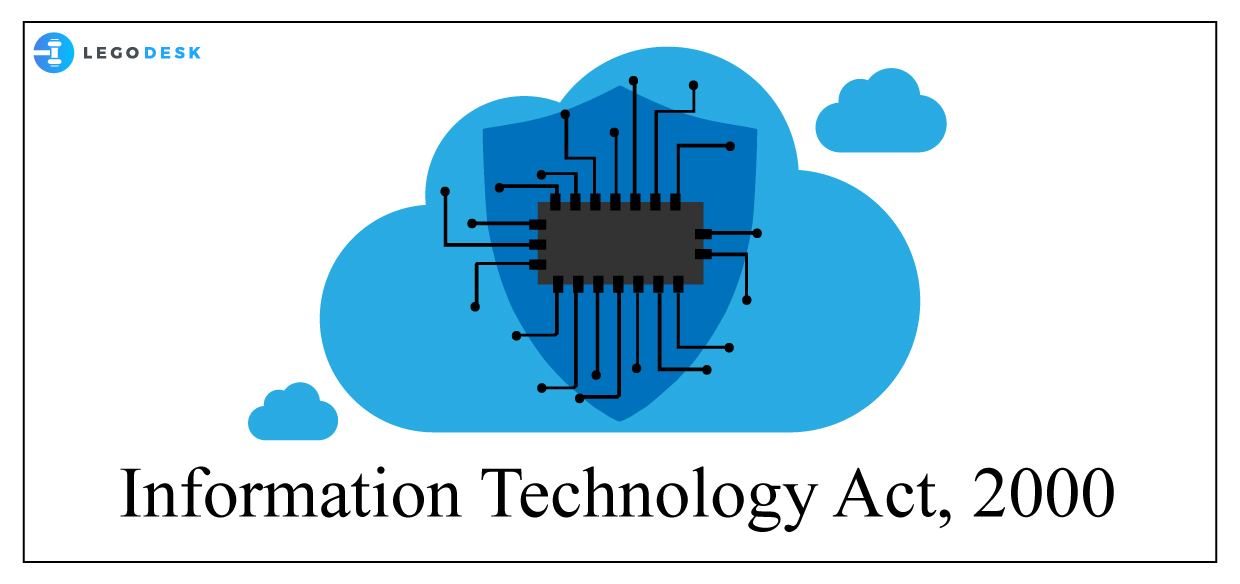
Background of the Act-
In 1996, the UN Commission on International Trade Law (UNCITRAL) devised the Model Law on Electronic Commerce. The recommendation made by this resolution was that all States must give favorable consideration to the model law. It also recommended for the enactment or revision of laws, in view of the need for uniformity of laws relating to communication and storage of information.
With that said, the Government of India, was quick to respond. The Ministry of Commerce created the first draft of the legislation by adhering to the guidelines known as the ‘E-Commerce Act, 1998.’ After that, a new ministry came into being, which was known as the ‘Ministry for Information Technology.’ The draft was taken over by the new ministry which later re-drafted the legislation as ‘Information Technology Bill, 1999.’ The bill was successfully passed in 2000 and received Presidential assent in the very same year and was enforced.
Salient Features of the Act
When the Information Technology Act was enforced in the year 2000, it contained 94 sections divided into 13 chapters and 4 schedules. The Act, for the very first time, recognized electronic records and digital signatures. The Act further describes various kinds of cyber crimes and prescribes punishments in for the same. Persons of other nationalities can also come under the purview of this act if the computer network is located within the territory of India. Since this Act complies with new technologies it has amended four legislations in India. They are – the Indian Penal Code,1860; Indian Evidence Act,1872; Banker’s Book Evidence Act, 1891; Reserve Bank of India Act, 1934. Further, the Act provides for an establishment of a Cyber Regulations Advisory Committee. The amendments have been made under Section 91-94.
Application of the Act
According to sub-clause (4) of section 1 of the Information Technology Act, 2000,
Nothing in this Act shall apply to, —
(a) a negotiable instrument as defined in section 13 of the Negotiable Instruments Act,
1881;
(b) a power-of-attorney as defined in section 1A of the Powers-of-Attorney Act, 1882;
(c) a trust as defined in section 3 of the Indian Trusts Act, 1882;
(d) a will as defined in clause (h) of section 2 of the Indian Succession Act, 1925
including any other testamentary disposition by whatever name called;
(e) any contract for the sale or conveyance of immovable property or any interest in
such property;
(f) any such class of documents or transactions as may be notified by the Central The government in the Official Gazette
List of offenses covered –
The Information Technology Act, 2000 covers the following offences –
Section 65: Tampering with computer source documents.
Section 66: Hacking with a computer system.
Section 66B: Receiving stolen computer or communication device.
Section 66C: Using the password of another person.
Section 66D: Cheating using the computer resource
Section 66E: Publishing private images of others
Section 66F: Acts of cyberterrorism
Section 67: Publishing of information which is obscene in electronic form.
Section 67A: Publishing images containing sexual advertisements.
Section 67B: Publication of child pornography or predating children online.
Section 67C: Failure to maintain records.
Section 68: Failure/refusal to comply with orders.
Section 69: Failuree/ refusal to decrypt data.
Section 70: Securing access or attempting to secure access to a protected system.
Section 71: Penalty for misrepresentation.
Section 72: Penalty for breach of confidentiality and privacy
Section 73: Penalty for publishing Digital Signature Certificate false in certain particulars.
Section 74: Publication for fraudulent purpose.
Amendments made to the Information Technology Act in 2008 –
There were some important amendments made to this Act in the year 2008. Section 66A was introduced which penalized sending “offensive messages.” Section 69 was also incorporated which gave the authorities the power to intercept or monitor or decrypt any information through any computer resource. It brought child pornography, cyber terrorism, and voyeurism within the purview of this Act.
Notable charges under Section 66A
- An Assamese cartoonist, Assem Trivedi was arrested under Section 66A of this Act and Section2 of the Prevention to Insults to National Honour Act, 1971 and under Section 124A for Sedition. He was arrested because his cartoon depicted widespread corruption in India. He was granted bail on a personal bond of INR 5000, and the accusations levied against him were removed.
- Ravi Srinivasan, a Puducherry businessman was arrested under Section 66A for accusing the son of then the Finance Minister of India, Shri P.Chidambaram, of corruption. The police sought his custody for 15 days but the court declined the request.
Criticisms against Section 66A
In November 2012, a petition was filed by Amitabh Thakur and Nutan Thakur, before the Allahabad High Court that Section 66A violated article 19(1)(a) of the Constitution of India. Another PIL was filed in the Supreme Court of India which stated that Section 66A violated Article 14,19 and 21 of the Constitution of India. On March 24, 2015, the Supreme Court rendered Section 66A as “unconstitutional.” It said that the provision is arbitrary, and it excessively and disproportionately violates the freedom of speech and expression in India.
Conclusion
The object of enacting the I.T. Act was simple. The Government sought to deliver and facilitate electronic, digital transactions and protect all kinds of cybercrime. It was important to make the cyber world strong due to the amount of traffic on the internet everywhere and the number of money people transacts through online methods. India and most other countries of the world have now what we call a branch of law, known as ‘cyberlaw’, that deals with all of these.

